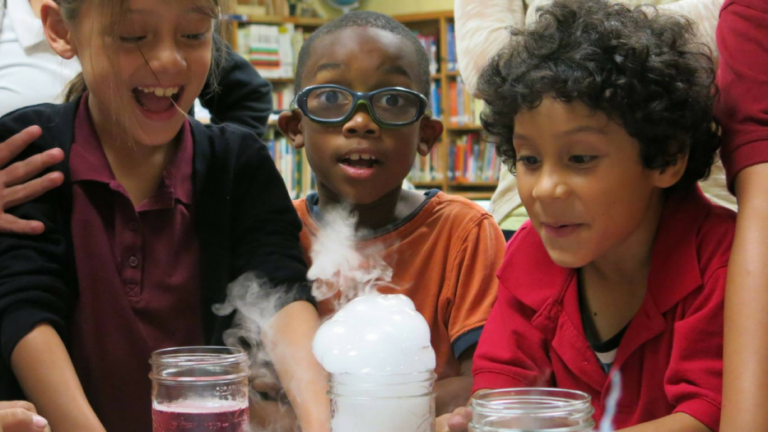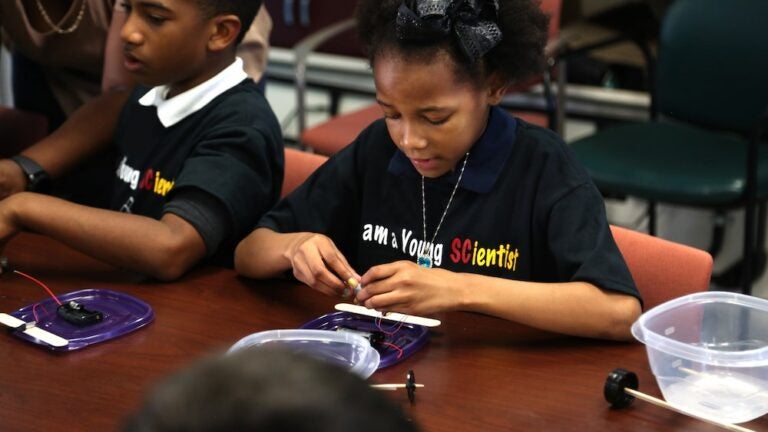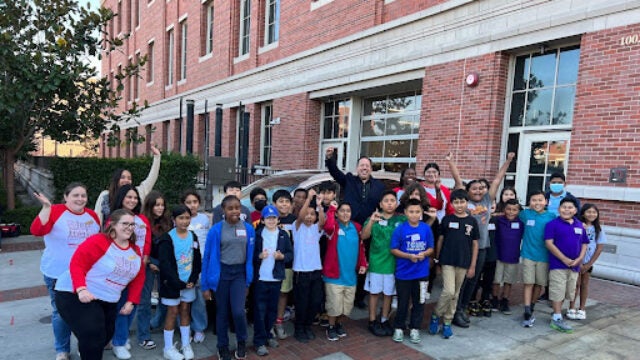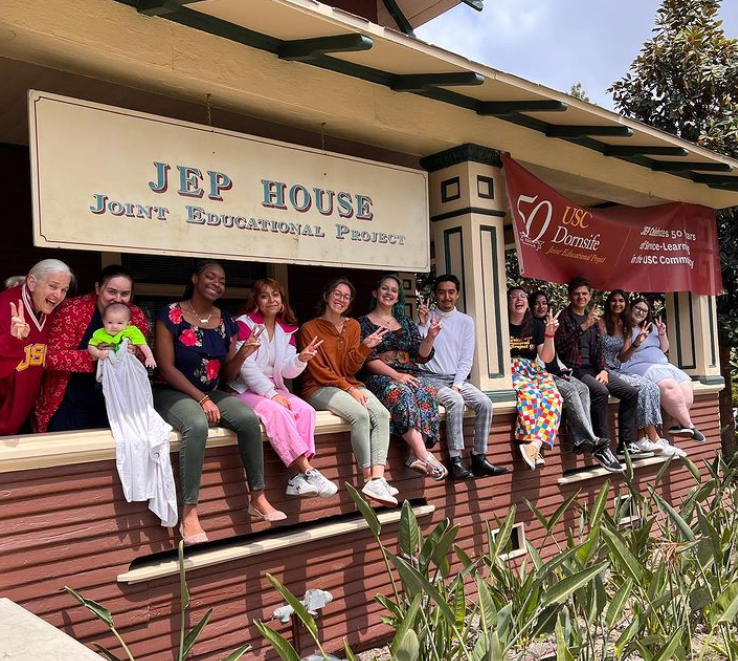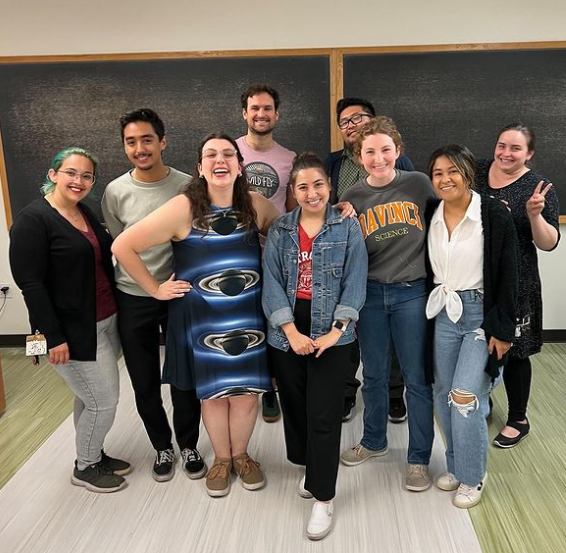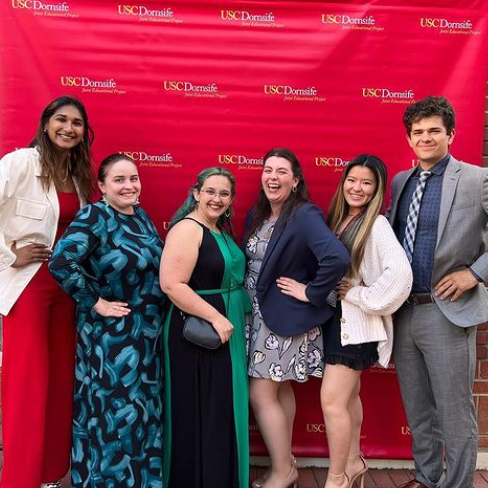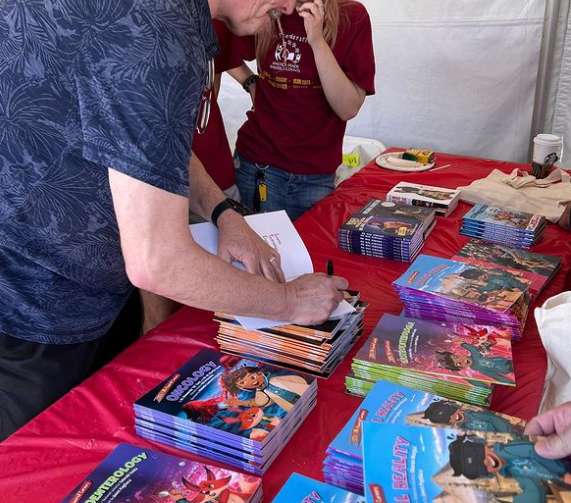Overview
-
The Young Scientists Program is funded in part with the generous support of the Michael and Cindy Winn Foundation. YSP is run out of USC Dornsife’s Joint Educational Project. YSP is comprised of a Program Director and undergraduate teaching assistants (TAs) from the life, natural, earth and engineering sciences, all of whom have a passion for education, community service work and science.
The program was originally introduced to Lenicia B. Weemes Elementary School in 2006 through a grant from the Weingart Foundation. In 2008 the program expanded to Vermont Elementary School. In 2010 the program was renamed the Young Scientists Program (YSP) – and is now present at seven of the USC Family of Schools and is more vibrant than ever.
The Young Scientist Program is dedicated to inspiring diverse students to become leaders and innovators in science and engineering. YSP science labs are designed to ignite and foster young children’s curiosity about the physical, marine, natural, life and engineering sciences. YSP bridges scientific gaps between what is taught in the classroom and what the young students see around them in their everyday lives and the ‘real world’.
- YSP promotes science literacy and encourages the pursuit of careers in the STEM fields by introducing students to areas of scientific study through interactive demonstrations and experiments brought into the classroom.
- YSP also allows for TAs to interact with each other; share teaching stories and teaching methods.
- YSP is committed to quality hands on science instruction. TAs and teachers work together to make science fun, challenging and enjoyable.
-
The Young Scientists Program works in partnership with 7 USC community schools,to engage more than 2400 elementary school students, 85 LAUSD teachers, and 7 principals through a broad repertoire of science curriculum. YSP TA’s are placed at each school presenting hands-on science labs to fourth and fifth grade classrooms. YSP brings scientific laboratory experiences directly to students and their teachers with the goal of supplementing current science instruction, complimenting LAUSD and state grade level science learning standards, strengthening science literacy and promoting interest in scientific careers.
One of YSP’s primary objectives is to increase science activities for a larger number of our neighborhood children to encourage them to consider careers in Science, Technology, Engineering and Mathematics (STEM) and to apply what they are learning in the classroom to the real world. USC undergraduate students learn how to become successful mentors, gain valuable teaching experience, and learn how to directly respond to the needs of the schools, communities and families.
Goals of YSP
-
Goal 1:
To foster a new generation of scientists: sparking new interest in scientific research and science careers among young people.
-
Goal 2:
To stimulate the resurgence of science education in Los Angeles.
-
Goal 3:
To offer young talent a unique science program to discuss their ideas with their peers and with national and international academic communities.
-
Goal 4:
To promote and encourage STEM education into our local schools.
-
-
YSP Science Curriculum and Labs
YSP TAs teach one science topic over a two-week time period, with TAs presenting to their assigned classroom once a week. This ensures that each science topic is taught in detail and that students can take their time on experiments, ask questions, write in their journals and read supplementary science literature on the topic.
The YSP curriculum is multi-disciplinary and encourages innovative ways for engineers and scientists to work together. YSP experiments are hands-on allowing students to “learn by doing.” YSP encourages experiential learning, engaging children in thorough investigations with objects, materials, phenomena, and ideas and guiding students as they draw meaning and understanding from those experiences.
Curriculum and YSP labs are created with the following thinking, teaching and learning skills in mind:
-
Critical Thinking
TA’s pose qualitative and quantitative questions during the lecture portion of the labs. The best questions are the ones that split opinions in class and lead to active discussions. No two classes are alike, so TAs tailor their teaching style depending on the class
-
Interdisciplinary Teams
With some activities, TAs can split up students into groups according to specific science careers, extra-curricular activities, hobbies or science topics of interest.
-
Visual Explanations
Lesson plans use visuals that help students “see” the concepts; videos, images or models. These visuals, combined with the explanations and personal experiences help students understand each science topic.
-
Applied Experiments
Students conduct experiments with the goal of verifying, falsifying, or establishing the validity of their hypothesis. Students record their lecture notes and experiments in their YSP science journals. They learn that an experiment is a method of testing – with the goal of explaining – the nature of reality. YSP experiments vary from personal and informal to highly controlled.
-
Links to Practice
It is important to help students link their new knowledge in basic science concepts to the events that happen in their everyday life and the larger world. Current science news stories are often discussed in the classroom.
-
Links to Research
It is important that students understand that science is not a static set of knowledge but a dynamic process that occurs today, and that this is a process in which today’s student will play an active role in the future. YSP incorporates the most recent scientific results into lectures, including TA undergraduate or graduate work.
-
STEM Education Programs by the Numbers
7
Partner Schools
80
Teachers Participating Every Year
2500
Kids Participating Every Year
17
Years of Experience
25k
Kids Impacted Total
3
Programs Currently Offered
